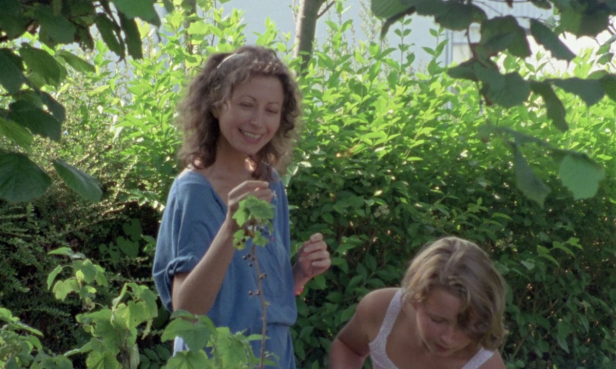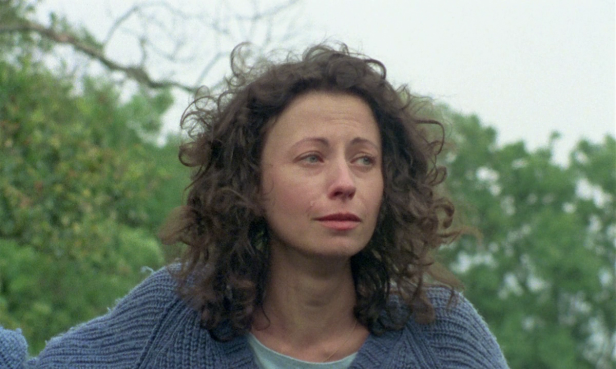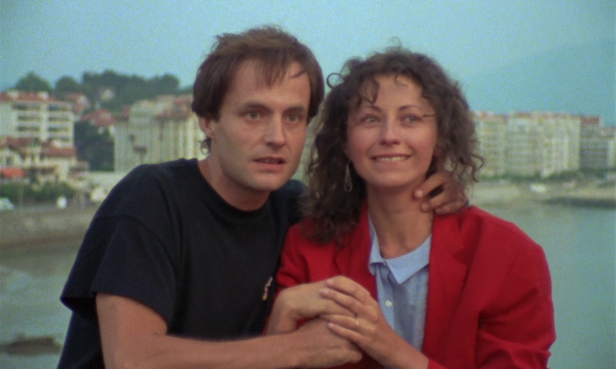Though it may not seem very obvious, one of the most important cinematic influences for Éric Rohmer was Alfred Hitchcock. If you know enough about Rohmer’s biography, this shouldn’t come across as a big surprise. He and Claude Chabrol, before their career as filmmakers, were among the first critics to take Hitchcock as a serious artist rather than as an entertainer, and to publish serious critical studies of the master’s work. Rohmer, unlike Chabrol who specialised in thrillers, hardly made any genre films, but he was every bit as Hitchcockian as Chabrol in his approach to filmmaking.
Despite the breezy, ‘arthousey’ feel of Rohmer’s films, one would be surprised to see that most of them follow rather scrupulously-weaved narratives. Characters in his movies play ‘games’ with one another—the ‘games’ of love, lust, loneliness and morals. They are torn between their self-imposed moral codes and inner desires, and thus perform ‘suspenseful’ balancing acts, hiding behind ‘MacGuffins’ they have built for themselves to win the games. Rohmer managed to create in his unfabricated depiction of reality ‘the suspense of morality.’ You could almost say that he was the (unlikely) love-child of Hitchcock and Rossellini.
Considering all these, The Green Ray (Le rayon vert in French; “Summer” in North America), the fifth instalment in the ‘Comedies and Proverbs’ series, is an utterly uncharacteristic Rohmer film. For a starter, the dialogues in the film were largely improvised by its leading actress, Marie Rivière—the furthest you could get from the typical Hitchcockian filmmaking, which demands a complete ‘auteurist’ control over most aspects of the production. Moreover, the use of extradiegetic music and the shots that can ‘almost’ pass as face close-ups in the film is, to say the least, shocking; especially when the French director openly expressed his disapproval of both devices on the grounds of realism and the fourth wall. In this respect, The Green Ray is made up of elements so exotic in his oeuvre, yet, as a whole, feels unmistakably Rohmer.
Like many of his other work, The Green Ray is largely set in the French riviera during the peak of the vacances season; it follows Delphine’s consistently unsuccessful attempts for nice summer holidays. The film begins with a phone call from her friend that soon brutally destroys her vacation plan. The friend cancels on Delphine who has recently gone through a painful break-up, and there’s no one else to accompany her. Although distraught by the crushed expectations and loneliness that has filled in the vacancy of her ex-boyfriend, Delphine still desperately tries to make the best out of her holidays as she just cannot stay in Paris all alone. She receives invitations from her friends and her family, and potential date offers from few men, but none of them quite works out for her. After another upsetting failure to enjoy herself and find a new interesting date in Biarritz, she decides to put every thing to an end. While waiting for a train bound to Paris, however, Delphine finally meets a man who she feels might be the one. Unsure of how this encounter may turn out, she suddenly remembers the conversation she has eavesdropped on about Jules Verne’s Le rayon vert: that the rare and brief sight of a green ray at the end of a sunset reveals one’s own thoughts, as well as of those surrounding. She asks him to go see a sunset together, and as if by magic, the sun does set with a glimpse of beautiful green ray. The film closes with the shot of the couple, their faces covered with sheer amazement.
Ah! Que le temps vienne
Où les coeurs s’éprennent!(Ah! Let the time come
When hearts are enamoured!)-Arthur Rimbaud
As with the rest of the ‘Comedies and Proverbs’ series, The Green Ray also begins with its thematic quote: this time, a line from Rimbaud’s poem. In a way, Delphine’s rather tortured journey to arrive at the meaningful romantic encounter mirrors Rimbaud’s restless wanderings across continents to arrive at some sort of peace with himself. Rohmer, however, does not employ any of the punk aesthetics that the French poet usually invokes; instead, he lets Rivière freely move around and talk within the frames, thereby successfully capturing the freewheeling spark, (but) with disciplines. Unlike his fellow nouvelle vague cineastes, he hardly uses showy camera works or elaborate montage techniques. And a handful of the un-improvised moments in the movie—the plot revolving around Verne’s Le rayon vert, which nicely leads up to the magical ending, and a series of dreamy card-finding shots punctuated with the extradiegetic music—function as the effective formal restraints that keep every thing grounded, as well as accentuating the spontaneous nature of the film.
While the presence of Rohmer’s brand of ‘magical realism’ lends the film lighthearted, jolly atmosphere, the structural design of the movie feels like a divergent passion narrative. (A quick side note: Rohmer was quite open about his Catholic beliefs, and indeed one of the first critics to identify the Catholic guilt that haunts Hitchcock’s oeuvre.) She’s looking (or waiting) for a durable relationship, but it doesn’t easily come by; only the temporary flings seem to be at hand. Delphine’s refusal to compromise and to settle for the readily-available, but second-rate alternatives only complicates the whole matter, at least through much of the film. There are three instances in which Delphine goes for a walk in solitude. Perhaps, the lyricism in nature created by winds, trees, and water makes her question why she feels this lonely and uncared for, pondering what it is that keeps her from being harmonious with her surroundings. Two of these walks result in Delphine in tears, one of which is captured in a near close-up: indeed a rare occasion for a Rohmer film. This particular shot evokes the spiritual nature of Renée Jeanne Falconetti’s performance in Dreyer’s film and the full-face close-up of Anna Karina weeping in Vivre sa vie (funnily enough, from watching The Passion of Joan of Arc).
Delphine seems to believe that love is a wonderful accident created by the collision of a few dozen coincidences taking place in the universe, much like how Mother Nature works; her ‘passion’ unfolds as her longing for romantic love persistently fails to find its place in the poetry of the cosmos, as manifested through the beauty in nature and in humanity. Her girlfriends say that the problem comes from her narrow-mindedness and reluctance to actively seek out dates, to which she objects by claiming that she is open to all possibilities. There’s no doubt that our heroine is open to all possibilities in a sense that she will fall for whoever feels right for her—she’s a passive romantic. She waits and waits, but finds loneliness unbearable. A nice stroll in the country only highlights the stark contrast between the cacophony in her life and all aspects of nature in tune with another.
Then, as if by a great grace, she runs into a guy with whom she can see herself having a meaningful relationship. But, make no mistake: she confesses that she has never before taken the initiative and approached a guy first. Love has not happened to her, but she has made the choice to be in love. Delphine may fool herself by attributing this to surrealistic moments in which she keeps finding cards and Verne’s nice tale of the green ray. Yet, it’s demonstrably obvious that the poet behind this particular cosmic accident—that is love—is Delphine herself. Throughout her journey until this point, she clings onto various excuses such as the possibility that her ex-boyfriend Jean-Pierre may come back or that the person she’s just met is just not ‘right,’ and avoids making real efforts. However, perhaps out of desperation in part and newfound bravery in another, she decides to be the one who writes her own cosmic poetry. With the horoscope that emphasises the colour green and the myth surrounding the green ray of a sunset as her verses, Delphine finally gets her own sonnet. We don’t know if the sunset reveals the couple’s thoughts, but it surely gives her the courage to continue her lines, at least I hope. The grand finale for a private ‘passion’ story.
Rohmer stated in several interviews that his favourite filmmaker was Jean Renoir, who famously said, “let the unforeseen come into a shot.” And for me, The Green Ray feels like his full-fledged attempt to channel the spirit of Renoir. The film has that great subtlety and the distant, yet warm look at its characters, which are typical of Renoir’s oeuvre; not to mention the spontaneity so well captured by both Rivière’s performance and Rohmer’s precision in the film’s overall design. This may not be the most representative of the director’s working method, but without doubt one of his very best films.



